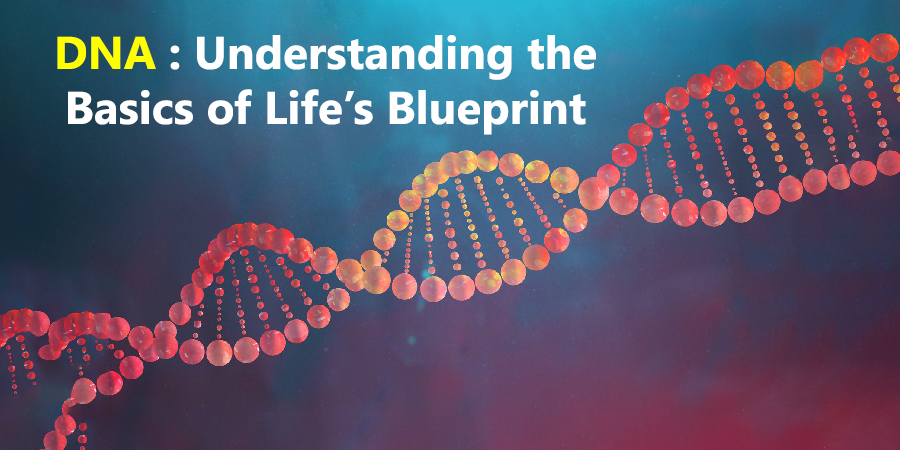DNA, or Deoxyribonucleic Acid, is the fundamental molecule in all living organisms. It carries genetic instructions that guide growth, development, and reproduction. Found in nearly every cell of the human body and in the cells of most living organisms, DNA is often called the “blueprint of life.” Each strand of DNA contains the information that determines an organism’s traits, such as eye color, height, and susceptibility to certain diseases. Let’s explore in detail about What Does DNA Stand For.

The Structure of DNA
The molecule known as DNA is made up of two long strands that wind around one another to create a double helix. This structure, first discovered in 1953 by James Watson and Francis Crick, is unique to DNA. The double helix is held together by nucleotide bases: adenine (A), thymine (T), cytosine (C), and guanine (G). These bases pair up to connect the two strands, with adenine pairing with thymine and cytosine pairing with guanine. These base pairs create the rungs of the “ladder,” while the sugar-phosphate backbone forms the sides.
The sequence of these bases forms genes, which hold specific instructions for building proteins. Proteins are essential molecules that perform various functions in the body, from building tissues to facilitating chemical reactions. The order of the bases in each gene determines which proteins are made, influencing everything from physical traits to metabolic functions.
Where is DNA Found?
In humans and other complex organisms, DNA is located in the nucleus of each cell, packaged into structures called chromosomes. There are normally 23 pairs of chromosomes in humans, for a total of 46. Each parent contributes one chromosome to each pair, meaning offspring inherit half of their DNA from each parent. DNA is also found in small amounts in the mitochondria, the “powerhouses” of the cell, which help produce energy. Mitochondrial DNA (mtDNA) is unique because it’s inherited solely from the mother.
What Does DNA Stand For : The Functions of DNA
DNA serves several critical functions that ensure life processes continue effectively. Here are the main roles of DNA:
- Genetic Instructions: DNA holds the information needed to build and maintain an organism. It contains the instructions to create proteins, enzymes, and other essential molecules.
- Inheritance: DNA is passed from generation to generation. It carries hereditary information, making it possible for organisms to reproduce and pass on traits to their offspring.
- Cell Replication: During cell division, DNA replicates itself to ensure each new cell has the same genetic information. This replication is vital for growth, repair, and reproduction.
How DNA Replicates Itself
One of DNA’s unique features is its ability to replicate, or copy itself. Replication occurs before a cell divides, ensuring that both new cells have an identical copy of DNA. Here’s a simplified version of the replication process:
- Unwinding the Double Helix: The DNA double helix unzips, with the two strands separating to create a Y-shaped “replication fork.”
- Pairing New Bases: Each original strand serves as a template for a new strand. Free nucleotides in the cell pair up with their complementary bases on each strand—adenine pairs with thymine, and cytosine pairs with guanine.
- Forming New Strands: Enzymes called DNA polymerases facilitate the attachment of new nucleotides to the template strand, forming a new complementary strand.
- Completion: Once the entire DNA molecule is copied, two identical double helices are formed. Each one contains one original strand and one newly synthesized strand, which is why DNA replication is known as a “semi-conservative” process.
This ability to replicate accurately ensures genetic continuity across generations, allowing species to survive and adapt over time.
What Does DNA Code For?
DNA carries the code for proteins, which are crucial for all cellular activities. The process of converting DNA into proteins involves two major steps: transcription and translation.
- Transcription: In the nucleus, DNA serves as a template to create messenger RNA (mRNA), a single-stranded molecule that carries the code from DNA to the ribosomes, where proteins are made.
- Translation: In the ribosome, mRNA is read in sets of three bases, known as codons. Each codon specifies an amino acid, which is the building block of proteins. Transfer RNA (tRNA) brings amino acids to the ribosome, where they are joined to form a protein chain.
Each protein has a specific function, from building muscle to digesting food. The sequence of amino acids in a protein determines its shape and, consequently, its function. Changes in DNA’s sequence can lead to changes in proteins, which can affect the entire organism’s traits and functions.
Mutations in DNA: What Happens When DNA Changes?
Sometimes, the DNA sequence can change. These changes are called mutations. Mutations can be caused by errors in replication, exposure to radiation, or certain chemicals. They can be small, affecting just one nucleotide, or large, altering entire sections of a chromosome. While many mutations have little to no effect, some can lead to diseases or disorders.
For example, a single mutation in the gene responsible for producing hemoglobin—a protein in red blood cells that carries oxygen—can cause sickle cell anemia, a condition where red blood cells take on a crescent shape and can’t function effectively. However, not all mutations are harmful. Some can be beneficial, providing variations that help organisms adapt to changing environments over generations, driving evolution.
The Role of DNA in Forensics and Medicine
DNA’s unique structure allows it to serve as an individual identifier, which has made it a valuable tool in fields like forensics and medicine.
- Forensics: DNA profiling, often called “genetic fingerprinting,” is used to identify individuals in criminal investigations. DNA samples collected from crime scenes can be matched to suspects by comparing specific DNA sequences.
- Medicine: DNA analysis is used in medicine to diagnose genetic disorders, study inherited conditions, and even predict disease risk. For example, testing for the BRCA1 and BRCA2 genes can help determine the risk of breast and ovarian cancers.
DNA sequencing, which reads the exact order of nucleotides, has transformed medical research, allowing scientists to understand the genetic basis of diseases. Gene therapy, a cutting-edge treatment, involves modifying a person’s DNA to correct defective genes, offering hope for diseases previously thought untreatable.
DNA and the Evolution of Life
DNA plays a crucial role in the evolution of species. Small changes in DNA can accumulate over generations, leading to adaptations that better suit an organism to its environment. These changes, driven by natural selection, form the foundation of evolution. By comparing the DNA of different species, scientists can trace evolutionary relationships, determining which species share common ancestors.
Conclusion of What Does DNA Stand For
DNA, or deoxyribonucleic acid, is more than just a molecule; it is the instruction manual for life. From its double-helix structure to its role in inheritance and protein synthesis, DNA is central to every biological process. Its ability to replicate ensures continuity from generation to generation, while its variations drive the diversity of life. DNA’s impact stretches beyond biology, influencing fields like forensics, medicine, and evolutionary science. Understanding DNA brings us closer to grasping the complex web of life on Earth and opens new doors to medical advances, giving us greater control over health and disease prevention.









